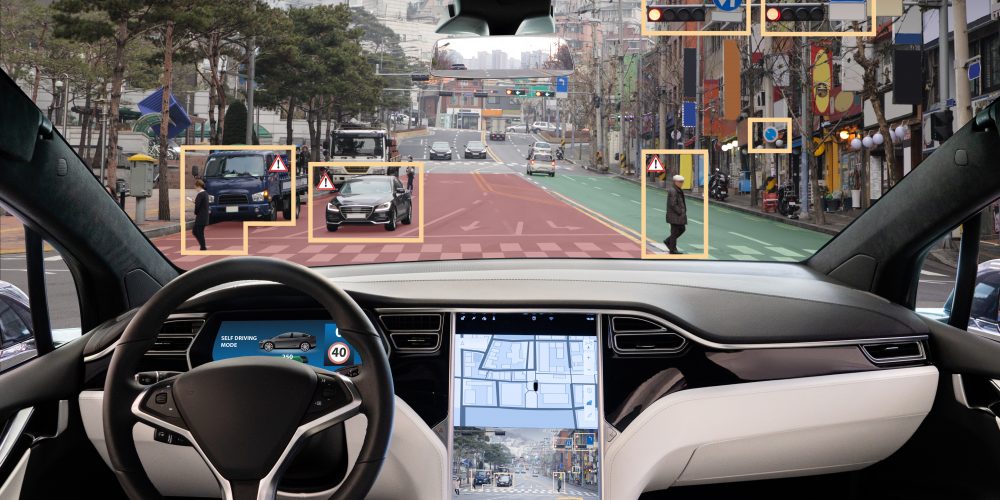No, this isn’t the future. Car companies such as Tesla have actually made it possible for our cars to start driving themselves, albeit they still require some human intervention. Also known as autonomous cars, a self-driving car is a vehicle that is able to sense its environment and operate without human involvement. At peak performance, a self-driving car should be able to go anywhere a traditional car can go and do anything that an experienced human driver can.
It’s important to know that the Society of Automotive Engineers (SAE) has developed a spectrum of driving automation, with 6 different levels. The levels range from 0-5, with 0 meaning full human operation of the car, and level 5 representing a vehicle that conducts all driving task under any and all conditions, requiring zero human input.
So, How Do They Work?
In a nutshell, autonomous cars use sensors, actuators, machine learning, radar, and software to create a map of their surroundings and navigate through them. Video cameras are used to see traffic lights, road signs, pedestrians, and other vehicles, while Lidar (meaning light detection and ranging) sensors use pulses of light to measure distances, detect road edges, and understand lane markings. Additionally, the wheels are equipped with ultrasonic sensors to detect other vehicles and curbs when parking.
Advanced software in the car processes all this sensory input, creates a path, and then sends signals to the car’s actuators to control the car. The car then brakes, accelerates, and steers accordingly. There are also rules “hard-coded” into the car, obstacle avoidance algorithms, and object recognition software that helps the car avoid accidents and stay on course.
The Future of Self Driving Cars
It’s clear that creating a self-driving car is a monumental task. Besides the sheer complexity of creating one, there are a number of challenges that must be considered:
- Lidar is expensive to include in cars and having many cars with lidar on the road might interfere with eachother’s sensors.
- Manufacturers are still trying to figure out how to handle bad weather. For example, if there’s snow on the road, how will the car know where the lane markings are?
- When an autonomous car gets into an accident, who will be held liable, the manufacturer, or the driver? What if there’s no way for the driver to take manual action over the vehicle?
Despite these challenges, the benefits to have autonomous cars on the road would be huge. Besides the added level of convenience, free time, mobility, and quality of life benefits, autonomous cars would actually greatly reduce CO2 emissions. This is because if autonomous cars, ridesharing, and electric vehicles become widespread, there would be many fewer cars on the road, as the autonomous cars would be able to efficiently transport people using fewer vehicles. Needless to say, many organizations around the world are working diligently towards a future where we may never need to use a steering wheel again.

Recent Comments